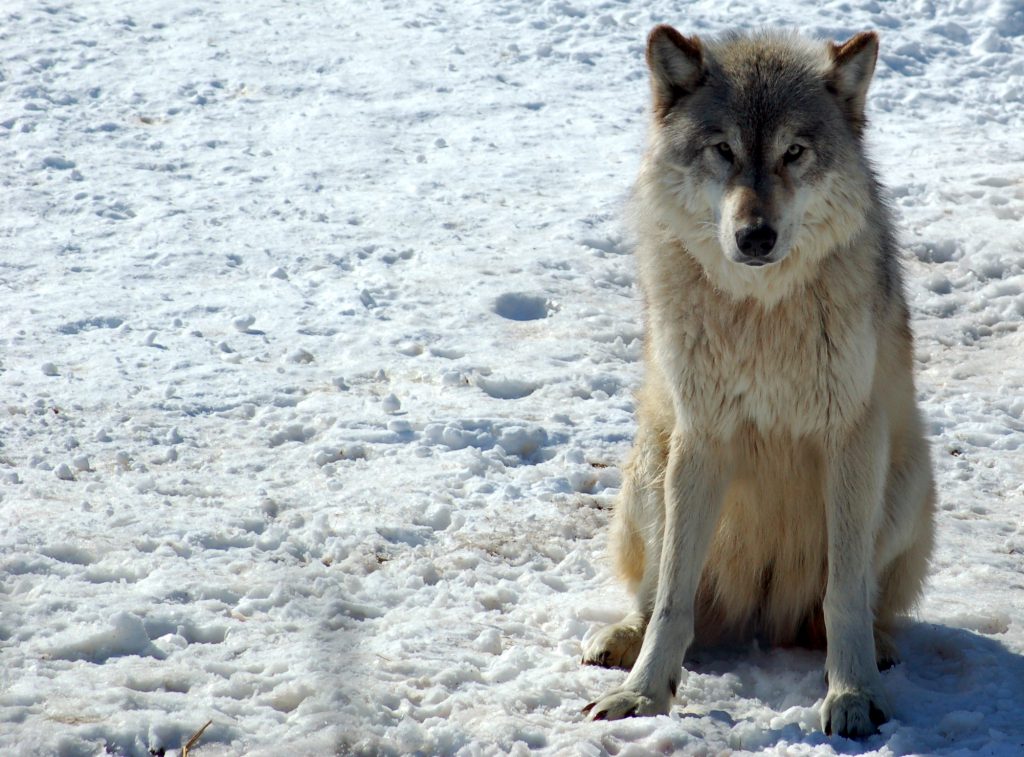Wisconsin Wolf Harvest Regulations Take Effect in November
GOP lawmakers had requested modifications to the regulations, but the DNR decided against changes.

Gray wolf. Photo by Derek Bakken / (CC BY)
After first receiving approval two years ago, Wisconsin’s wolf harvest regulations are set to take effect in November.
Federal protections remain in place for wolves. The harvest regulations help pave the way for a wolf hunt if ongoing efforts to lift federal protections for wolves are successful.
In October 2023, the Natural Resources Board first signed off on the wolf harvest regulations and the agency’s updated wolf management plan. The regulations shorten the window to register wolf kills, update wolf harvest zone boundaries, issue zone-specific tags and provide protections for wolf dens.
The Wisconsin Department of Natural Resources sought to publish a rule implementing those changes after a Wisconsin Supreme Court ruling found a Republican-controlled legislative committee could not indefinitely block administrative rules. The regulations had been held up for years as GOP lawmakers on the state Senate sporting heritage committee had requested changes, including inclusion of a statewide population goal or range for wolves.
In September, the DNR informed the committee it would not change the regulations. Scott Karel, the agency’s wildlife regulation policy specialist, told the DNR’s wolf advisory committee Thursday that lawmakers raised no objections. The rule is set to be published in the administrative register Oct. 27, and the regulations will take effect Nov. 1.
Without the rules in place, Karel had previously warned the agency could be vulnerable to a legal challenge seeking to stop a wolf hunt.
“From our standpoint, this was the last thing that we had to do, from a department perspective, to be ready for potential wolf (delisting),” Karel said.
Republicans in Congress have introduced bills to remove gray wolves from the federal endangered species list, including Congressman Tom Tiffany and U.S. Sen. Ron Johnson.
In Wisconsin, a 2012 law requires a wolf hunt each year when the animal isn’t listed as a federally endangered species. Groups have petitioned the agency to list the wolf as a state-threatened or endangered species, but the DNR has said the wolf population has recovered in Wisconsin.
GOP lawmakers sought changes, including a population range
Earlier this year, the Senate sporting heritage committee’s chair Sen. Rob Stafsholt, R-New Richmond, asked the DNR in a letter to make several changes to the rule. The requested changes included setting a statewide population goal or range, increasing the harvest registration window to 12 hours, allowing harvest tags to be used anywhere statewide and eliminating all subzones. The removal of those zones would’ve included buffer areas meant to protect wolves on tribal reservations.
Stafsholt did not respond to a request for comment.
In Thursday’s meeting, Luke Withrow with the Wisconsin Bear Hunters Association asked the DNR whether the rule was approved because of the Supreme Court ruling in July. Karel said lawmakers on the GOP-controlled Joint Committee for Administrative Rules can still review the rule, but any objection would not stop it from going into effect without legislation.
Earlier this year, groups like the Wisconsin Bear Hunters Association and the Wisconsin Farm Bureau Federation voiced support for the former wolf management plan that set a goal of 350 wolves. When that plan was first written in 1999, the state had around 250 wolves. DNR data shows the animal’s population has since grown to more than 1,200 wolves and appears to be stabilizing.
Bear hunters and the Wisconsin Wildlife Federation opposed reducing the registration window to eight hours after killing a wolf, urging the agency to maintain its current timeframe of 5 p.m. the day after a wolf is killed. Hunters and farmers have also pressed for delisting and state management of wolves, citing wolf conflicts with hunting dogs and livestock.
Meanwhile, conservation and animal protection groups supported the DNR’s harvest regulations, including Wisconsin’s Green Fire and the Humane World for Animals. They supported a shortened registration window, saying it would help prevent overharvest of wolves.
In 2021, state-licensed hunters killed 218 wolves in less than three days, exceeding their share of a 200-wolf quota split with the state’s Ojibwe tribes. Members of Wisconsin tribes, who view the wolf as a brother, have declined to harvest the animal. They’ve sought to maintain protections for wolves in and around their reservations.
The DNR’s wolf advisory committee will provide input and recommendations to the agency on carrying out the state’s wolf management plan, as well as developing policies and harvest quotas.
Wolf harvest regulations will soon take effect as wolves face potential delisting was originally published by Wisconsin Public Radio.
If you think stories like this are important, become a member of Urban Milwaukee and help support real, independent journalism. Plus you get some cool added benefits.



















